WITH TECHNOLOGY DERIVED DIRECTLY from Formula 1, the latest generation of the Mercedes- AMG C 43 4MATIC sets new standards for innovative drive solutions both as a Saloon (combined fuel consumption 9.1-8.7L/100 km, combined CO2 emissions 206-196 g/km) and as an Estate (combined fuel consumption 9.2-8.8L/100km, combined CO2 emissions 209-199 g/km). Following its premiere in the Mercedes-AMG SL 43, the AMG 2.0-litre four-cylinder engine, the world’s first series-production unit to feature an electric exhaust gas turbocharger, is now also being used in the C-Class. The new form of turbocharging guarantees particularly spontaneous response across the entire rev range and thus offers an even more dynamic driving experience. The turbocharger is operated via the 48-volt electrical system, which also feeds the belt-driven starter-generator (RSG). In the Mercedes-AMG C 43 4MATIC the unit produces 300kW and, in certain driving situations, is able to call upon a brief additional boost of 10 kW from the RSG. The standard rear-axle steering, the AMG Performance 4MATIC permanent all- wheel drive with rear-biased torque distribution, the AMG SPEEDSHIFT MCT 9G transmission with wet start-off clutch and the AMG RIDE CONTROL suspension with Adaptive Damping System also contribute to the dynamic driving experience. In keeping with this, brand-specific features in the equipment and appointments as well as in the exterior and interior design emphasise the performance-oriented character of the new Mercedes-AMG C 43 4 MATIC.
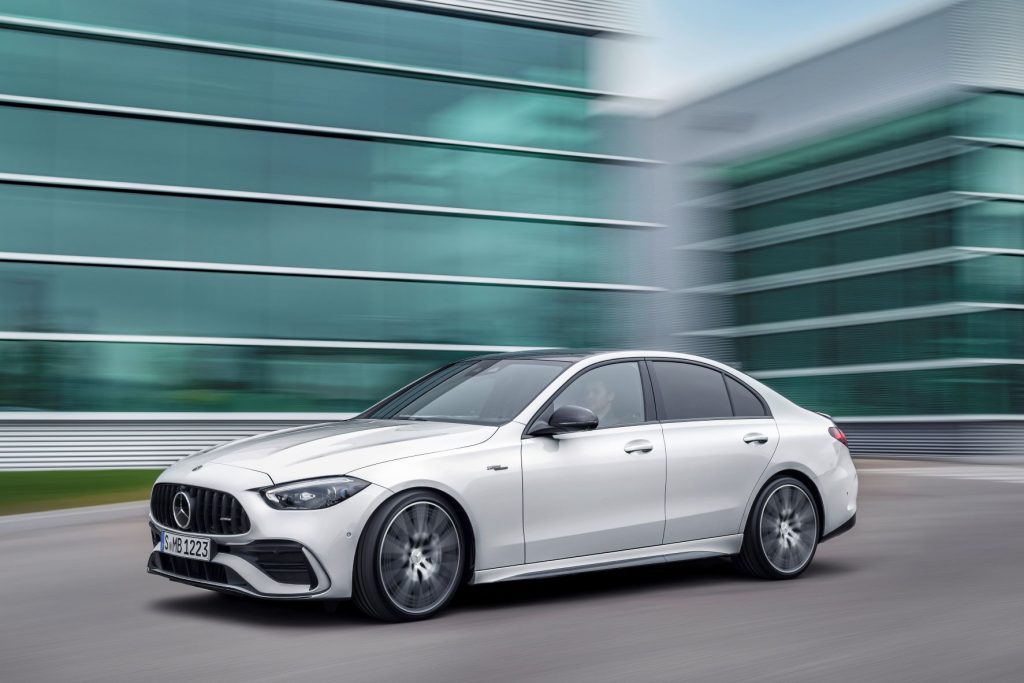
“The C-Class has always been an absolute success story for Mercedes-AMG. With the innovative technology of the electric exhaust gas turbocharger, we are once again significantly increasing the attractiveness of this latest generation. The new turbocharging system and the 48-volt on-board electrical system not only contribute to the outstanding driving dynamics of the C 43 4MATIC, but also improve its efficiency. In this way, we are demonstrating the tremendous potential that lies in electrified combustion engines. The standard all-wheel drive, the active rear-axle steering and the quick-shifting transmission all serve to enhance the Driving Performance that is the hallmark of AMG,” says Philipp Schiemer, Chairman of the Board of Management of Mercedes-AMG GmbH.
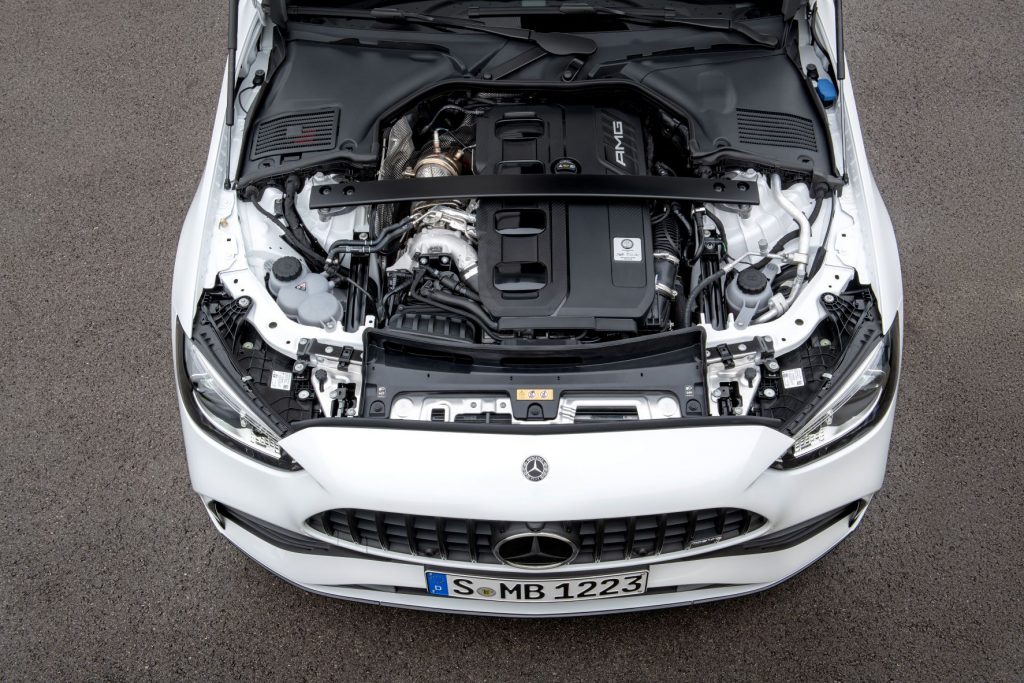
At the heart of the new Mercedes-AMG C 43 4MATIC is the AMG 2.0-litre four-cylinder engine, which combines innovative technologies and high performance with exemplary efficiency. At the same time, it remains true to a tradition typical of the brand: not only was it developed entirely at the company’s site in Affalterbach, but it is also manufactured there in accordance with the principle of “One Man, One Engine”. In this process, Mercedes-AMG combines the craftsmanship of its highly qualified employees with the latest production methods of Industry 4.0 and a high degree of digitalisation.
The internally named M139l engine (l for longitudinal installation) is the world’s first series-production engine to be turbocharged with an electric exhaust gas turbocharger. The innovative system is a direct derivative of the technology that the Mercedes-AMG Petronas F1 Team has been using so successfully in the premier class of motorsport for many years. The new form of turbocharging guarantees particularly spontaneous response across the entire rev range. This leads to an even more dynamic driving experience, while at the same time increasing efficiency.
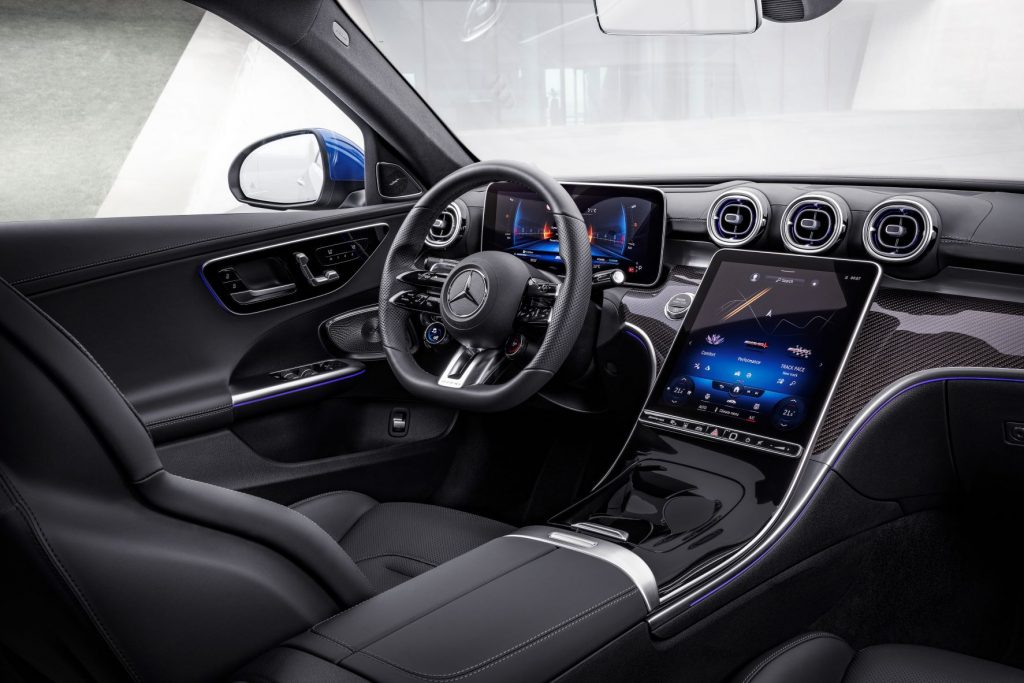
The functional principle of the electric exhaust gas turbocharger in detail
An electric motor around four centimetres thin is integrated directly on the turbocharger shaft between the turbine wheel on the exhaust side and the compressor wheel on the intake side. Electronically controlled, this drives the shaft of the turbocharger directly and thus accelerates the compressor wheel, before the exhaust gas flow takes over the drive in the conventional way.
This significantly improves the response directly from idle speed and across the entire rev range. The combustion engine responds even more spontaneously to accelerator pedal input, while the entire driving feel is significantly more dynamic. In addition, the electrification of the turbocharger enables higher torque at low revs. This also increases agility and optimises acceleration from a standstill. Even when the driver takes his foot off the accelerator or brakes, the technology is able to maintain boost pressure at all times, so ensuring a continuously direct response.
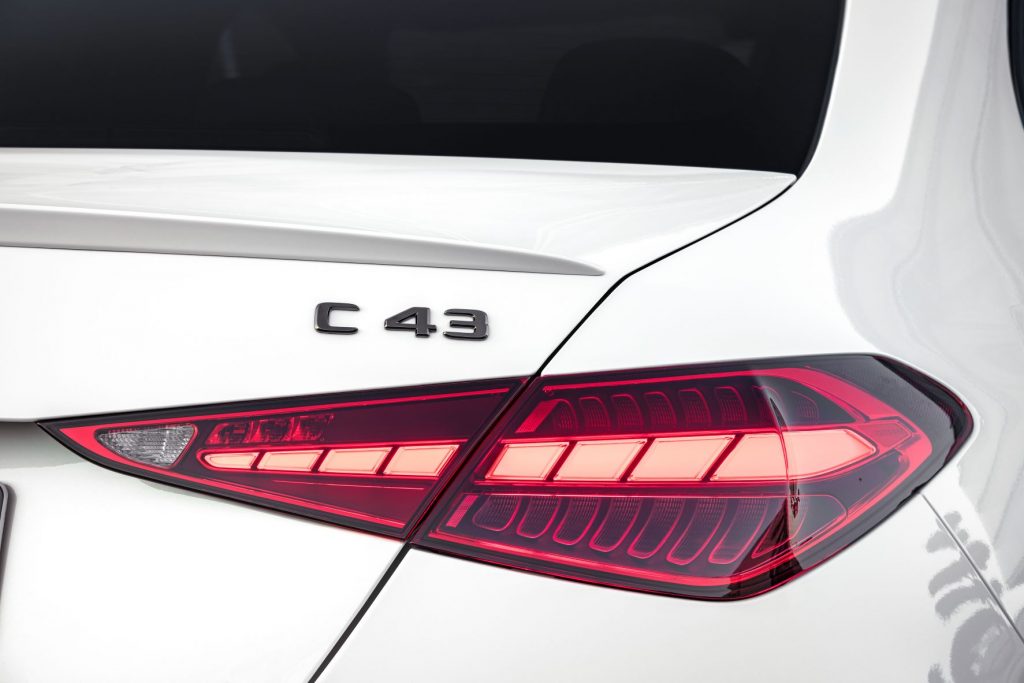
Powered by the 48-volt on-board electrical system, the electric exhaust gas turbocharger operates at speeds of up to 175,000 rpm, which enables a very high air flow rate. The turbocharger, electric motor and power electronics are connected to the combustion engine’s cooling circuit to create an optimal temperature environment at all times.
The closed-deck design of the M139 – adopted from the world of motorsport – ensures maximum rigidity in conjunction with low weight and allows peak combustion pressures of up to 160 bar. The areas around the cylinders are mostly solid, and the cover plate is penetrated only by smaller ducts for the coolant and engine oil. Other design highlights of the engine include NANOSLIDE technology, with which the linings are coated so as to reduce the friction between piston and cylinder. This gives the linings a mirror-like surface for minimal friction, is twice as hard as conventional grey cast-iron liners and therefore makes them much more durable. The coating made its debut in the AMG V8 engine M156, has been used to refine other AMG engines for many years and can also be found in the Formula 1 engine of the Mercedes-AMG Petronas Formula 1 Team.
Another outstanding feature is the two-stage petrol injection. In the first stage, particularly fast and precise piezo injectors deliver the fuel into the combustion chambers at pressures of up to 200 bar. The second stage adds intake manifold duct injection with solenoid valves, which is needed to achieve the engine’s high specific power output.
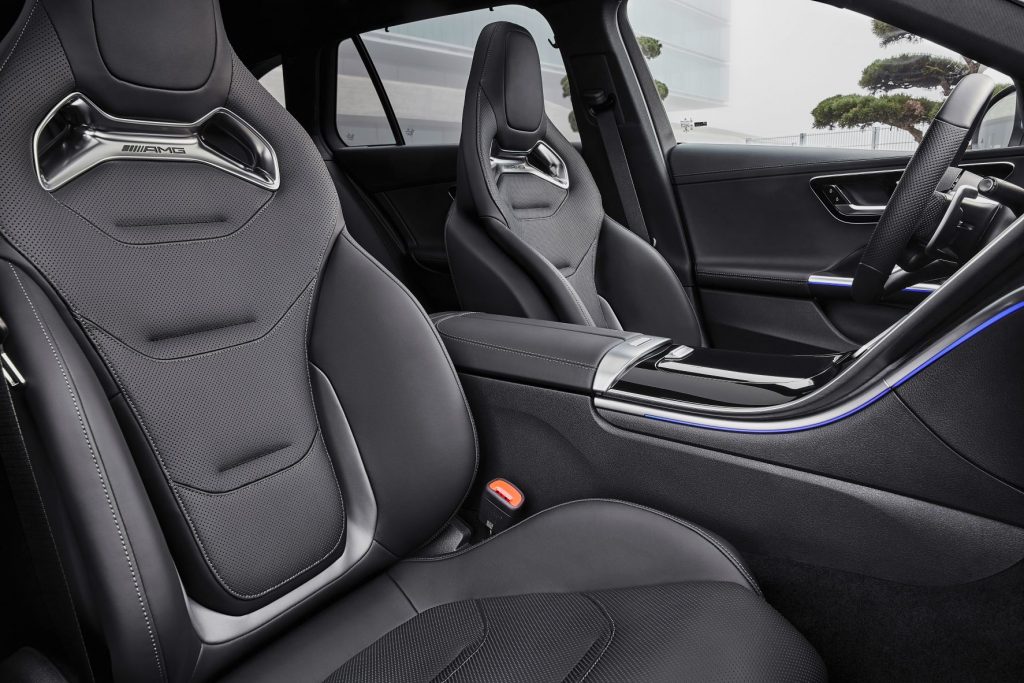
The high output also necessitates a sophisticated cooling system that can cool the cylinder head and crankcase to different temperature levels. This measure makes it possible to maintain a cold cylinder head for maximum power with efficient ignition timing, along with a warm crankcase to reduce internal engine friction. The cylinder head is cooled by a mechanical high-performance water pump; the crankcase is cooled by a second, electrically driven water pump. After a cold start, this pump remains passive until the engine has warmed up. In operation it is regulated by the engine control unit so that the crankcase is always cooled according to need.
